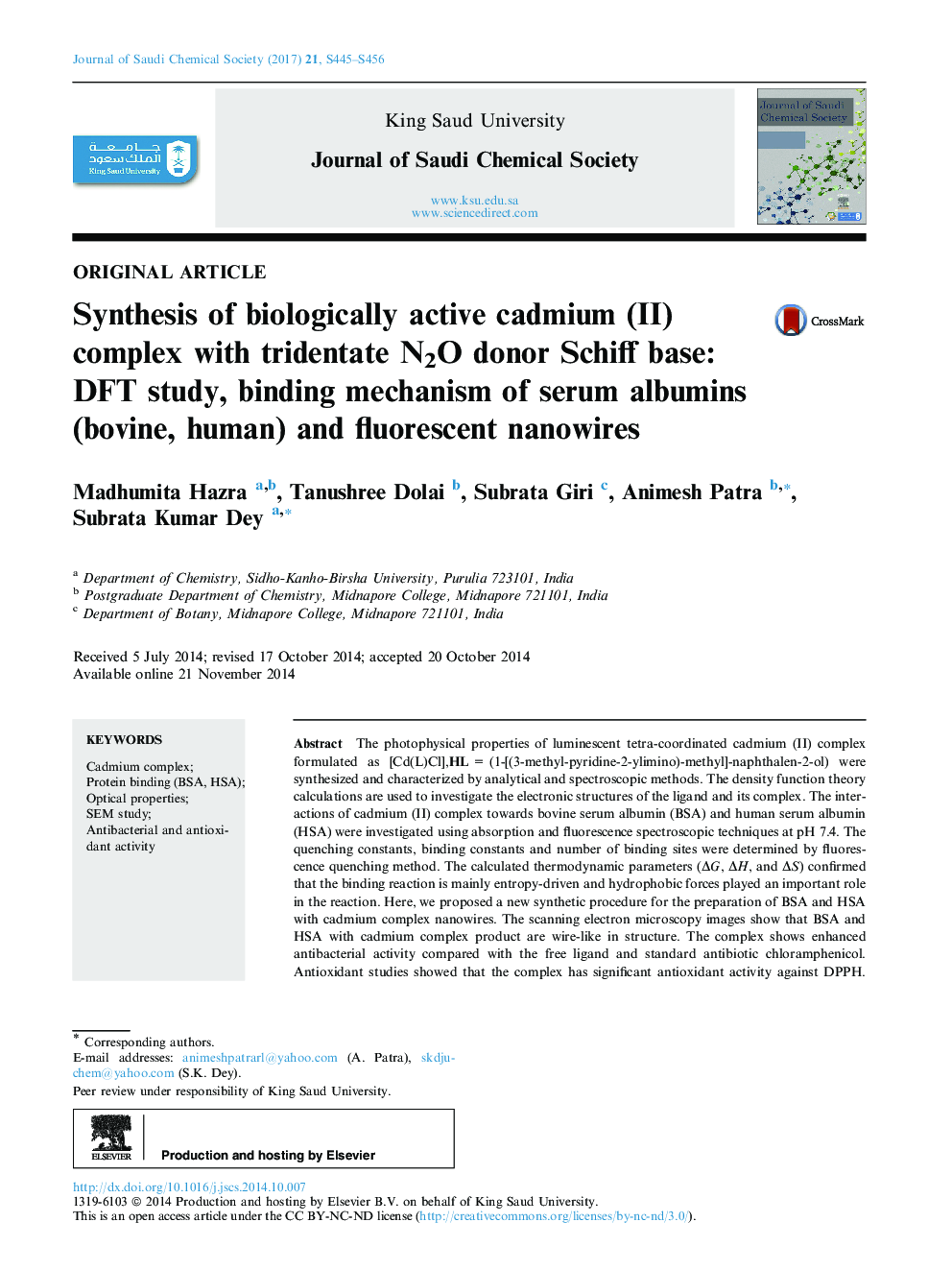| Article ID | Journal | Published Year | Pages | File Type |
|---|---|---|---|---|
| 4909443 | Journal of Saudi Chemical Society | 2017 | 12 Pages |
The photophysical properties of luminescent tetra-coordinated cadmium (II) complex formulated as [Cd(L)Cl],HL = (1-[(3-methyl-pyridine-2-ylimino)-methyl]-naphthalen-2-ol) were synthesized and characterized by analytical and spectroscopic methods. The density function theory calculations are used to investigate the electronic structures of the ligand and its complex. The interactions of cadmium (II) complex towards bovine serum albumin (BSA) and human serum albumin (HSA) were investigated using absorption and fluorescence spectroscopic techniques at pH 7.4. The quenching constants, binding constants and number of binding sites were determined by fluorescence quenching method. The calculated thermodynamic parameters (ÎG, ÎH, and ÎS) confirmed that the binding reaction is mainly entropy-driven and hydrophobic forces played an important role in the reaction. Here, we proposed a new synthetic procedure for the preparation of BSA and HSA with cadmium complex nanowires. The scanning electron microscopy images show that BSA and HSA with cadmium complex product are wire-like in structure. The complex shows enhanced antibacterial activity compared with the free ligand and standard antibiotic chloramphenicol. Antioxidant studies showed that the complex has significant antioxidant activity against DPPH. The obtained IC50 value of the DPPH activity for complex (IC50 = 138 μg/ml) showed excellent scavenging property compared to standard ascorbic acid.
